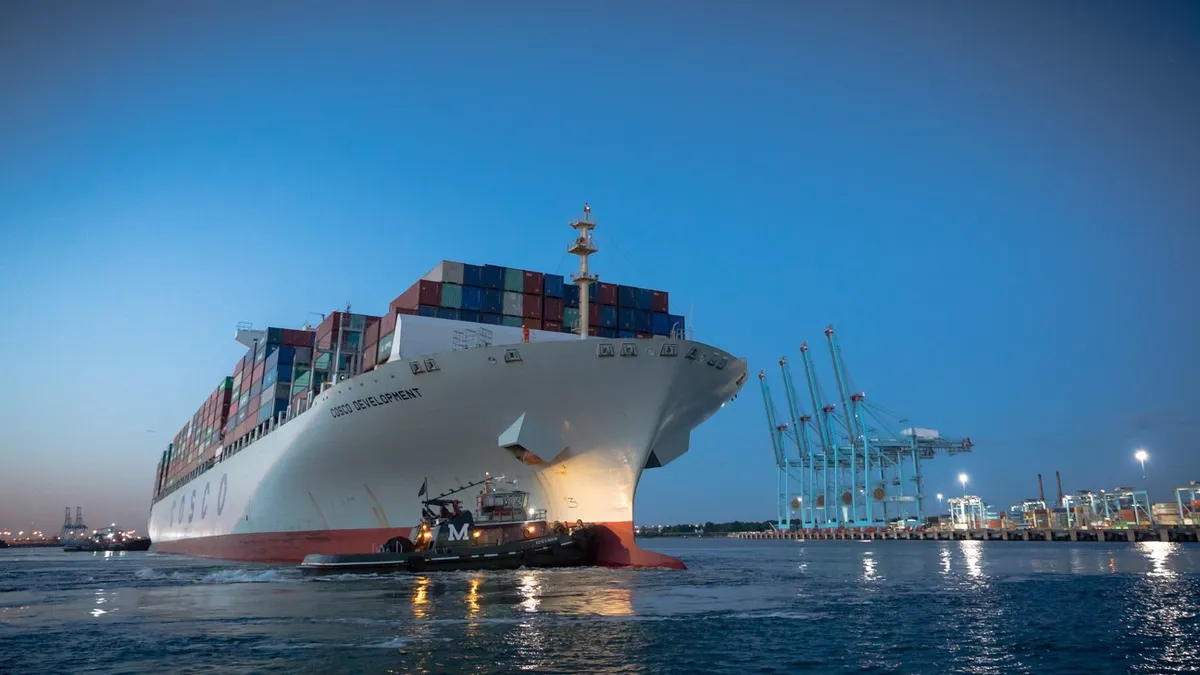Dive Brief:
- Nine major ocean carriers and terminal operators have agreed to develop a blockchain platform called the Global Shipping Business Network (GSBN), with the aim of increasing efficiency and transparency using distributed ledger technology, according to a press release.
- The signatories to the formal statement of intent include COSCO Shipping Lines, CMA CGM, Evergreen Marine, OOCL, Yang Ming, DP World, Hutchison Ports, PSA International and Shanghai International Port.
- CargoSmart, a software company funded by OOCL, will create the blockchain software.
Dive Insight:
It is abundantly clear that the ocean shipping industry is getting on board with blockchain — but which one?
GSBN is at least the fourth blockchain initiative or pilot aimed at the ocean shipping industry, and it's becoming clear that carriers and other stakeholders don't feel the need to bet on just one horse.
Earlier this year, AB InBev, Accenture, APL, Kuehne + Nagel and a European customs organization tested exchanging documents via blockchain technology, instead of physically or digitally.
In a partnership with Samsung SDS and Dutch bank ABM AMRO, the Port of Rotterdam is testing a blockchain system for linking container logistics and payments beginning in January, according to a press release from the port.
And TradeLens, the joint-venture between Maersk and IBM will be "fully commercially available" by the end of 2019, according to the parties with 94 participants, including major players like freight forwarder CEVA Logistics, ocean carrier Pacific International Lines (PIL) and a network of 20 port and terminal operators that span 234 maritime gateways.
Though the initiatives have similar top-line goals of increasing efficiency and removing redundancy and administrative time in global ocean shipping, the redundancy suggests there may be winners and losers in the ocean shipping blockchain game.
Marvin Edly, head of TradeLens at IBM blockchain, told Coindesk that signing on carriers is the key to a successful platform and the one signed on, PIL, is not enough.
Though all of these platforms purport to be headed toward open-source collaboration, ownership seems to be a significant factor in getting competitors to sign up together. With five carriers, the GSBN may have a better shot at moving forward in a meaningful way.














